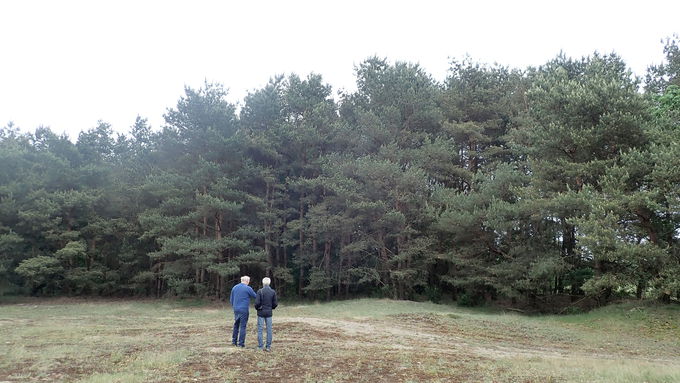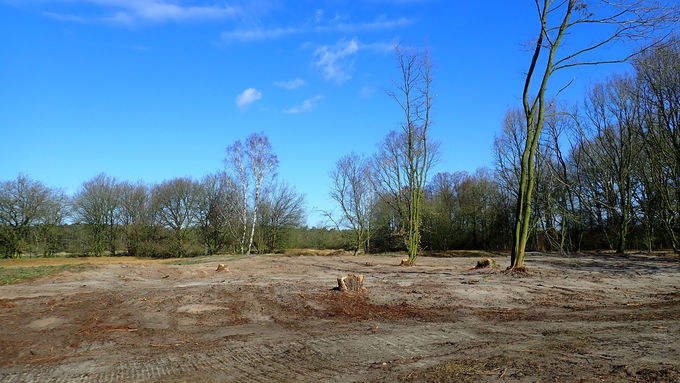The inland dune with pine trees before the start of works. © Thomas Kutter, NLWKN
download picturemain content
Project of the month
#08/2020 OPTIMIZATION AND PRESERVATION OF VALUABLE SAND DUNES IN THE SAC WÜMMENIEDERUNG
More than just sand – species-rich sand dunes near Unterstedt
The inland dunes near Unterstedt in the district of Rotenburg (Wümme) represent valuable habitats of state-wide importance. The dune area with its flat relief and in some places well-developed sandy grassland vegetation is part of the SAC ‘Wümmeniederung’ in the Natura 2000 network of protected areas of the European Union. A joint project by the Lower Saxony Water Management, Coastal Defence and Nature Conservation Agency (NLWKN), the Ecological NABU Station Oste Region, the district of Rotenburg (Wümme) and the City of Rotenburg (Wümme) aims to preserve and develop this valuable area.
Pioneer woody plants such as poplars and birches increasingly had pushed their way into the valuable open areas. In addition, an approximately 50-year-old pine forest impaired the rare habitat type 2330 (Inland dunes with open Corynephorus and Agrostis grasslands). Also some invasive non-native species, such as black cherry (Prunus serotina) and the narrow-leaved ragwort (Senecio inaequidens), have increasingly spread in recent years. Therefore, comprehensive measures were necessary to counteract the negative trend.
To complete the worked area for this action, the almost 1.4 hectare sized plot of land belonging to the Wümme water board was acquired in preparation of the implementation. In February/March 2020, the pine forest as well as poplars, birches and black cherries were removed by means of extensive woodland work. Subsequently, heavily proliferating blackberry and stinging-nettle stands were removed. By partially stripping off the topsoil, open sandy areas were created again, in particular to optimize the conditions for low-competitive plant species of the nutrient-poor grassland and to stimulate the existing seed potential. In addition to the promotion of rare and endangered plant species, numerous animal species, such as the sand lizard (Lacerta agilis), but also endangered spider species, wild bees and other insects benefit from the measures implemented within the framework of the LIFE IP Atlantic Region DE.
The initiation of grazing with sheep and goats will keep the dune area open in the long term. Therefore, a wolf-proof night pen was built to provide shelter for the animals at night. In May 2020, a shepherd was in the area with his animals for the first time.
An information board is planned to give interested parties an understanding of this special habitat.
Related Topics
Further Links
- SAC Wümmeniederung“ (DE-2723-331) – Niedersächsischer Landesbetrieb für Wasserwirtschaft, Küsten- und Naturschutz (in German) (external link opens in a new window)
- Ökologische NABU-Station Oste-Region (ÖNSOR, in German) (external link opens in a new window)
- District of Rotenburg (Wümme) – Department for Naturschutz and Landscape Management (in German) (external link opens in a new window)





